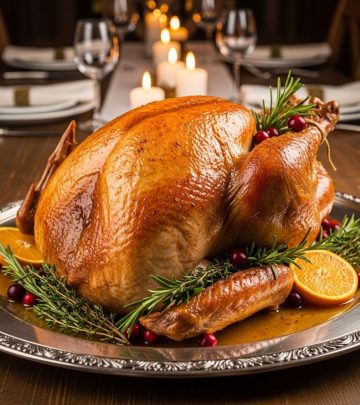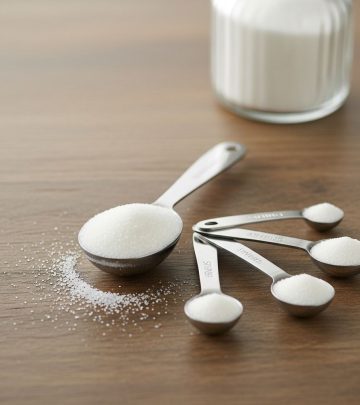DIY Fruit Fly Traps: Easy, Effective Solutions for a Pest-Free Kitchen
Discover proven strategies, homemade traps, and smart habits to eliminate fruit flies and reclaim your kitchen naturally.

DIY Fruit Fly Traps: The Ultimate Guide for a Pest-Free Kitchen
If you’ve ever noticed tiny flies hovering around your ripening fruit or compost bin, you’re not alone. Fruit flies are a persistent nuisance, thriving on sugary residues and laying eggs wherever they find fermenting food. Fortunately, you can take back control with simple, homemade traps and a few strategic changes to your kitchen routine. This comprehensive guide provides step-by-step instructions, expert-backed advice, and maintenance tips so you can banish fruit flies for good.
Why Do Fruit Flies Invade Kitchens?
Fruit flies are attracted to the scent of fermenting produce, discarded food scraps, and even residues in drains or compost bins. Their rapid life cycle allows populations to explode quickly—just one piece of overripe fruit or a bit of sticky juice can launch a full-blown infestation. These pests lay eggs on moist surfaces; within 24 hours, larvae hatch and start feeding, making prevention as important as eradication.
How Do DIY Fruit Fly Traps Work?
Homemade fruit fly traps work by exploiting the insects’ fondness for fermenting aromas, mainly apple cider vinegar and similar baits. The attractant lures them in, while a restrictive barrier or slippery solution prevents escape. The best traps combine a tempting scent and clever design to ensure flies enter—but never leave.
The Science Behind the Trap
- Scent Attraction: Fruit flies are drawn to acetic acid and fruity esters released by fermenting substances, especially heated apple cider vinegar.
- Surface Tension Breakers: Adding a few drops of dish soap breaks the liquid’s surface tension, causing flies to sink and drown quickly once they land.
- Entrapment: Barriers such as plastic wrap with pinholes or paper funnels make it nearly impossible for flies to exit after entering.
According to research published in the Journal of Medical Entomology, apple cider vinegar traps with dish soap outperform other attractants and methods in terms of speed and thoroughness for reducing fruit fly populations quickly and safely.
The Most Effective DIY Fruit Fly Traps
There are several tried-and-tested homemade traps you can use—most require only common kitchen items. Here are the top three methods:
1. The Classic Heated Apple Cider Vinegar Trap
- Pour 1/2 cup apple cider vinegar into a small jar or glass.
- Add a teaspoon of sugar (optional, to increase sweetness).
- Microwave the mixture for 8–10 seconds to release more aroma.
- Stir in 2–3 drops of dish soap to break the surface tension.
- Stretch a piece of plastic wrap tightly over the jar’s mouth.
- Use a toothpick to poke 6–8 tiny holes in the plastic. (Smaller holes prevent escapes!)
- Place the trap near your fruit bowl or compost bin—but never inside the fruit bowl itself.
How it works: The warm, aromatic vinegar lures fruit flies through the holes. Unable to exit, they fall into the solution and drown.
2. The Wine or Beer Trap
- Pour a small amount of red wine or beer into a glass.
- Add a drop of dish soap.
- Cover with plastic wrap and poke holes or use a paper funnel (see below).
Fermented beverages are powerful attractants for fruit flies due to their yeasty, sweet aroma. Red wine is particularly effective.
3. The Paper Cone & Fruit Trap
- Put fruit scraps or peelings in the bottom of a mason jar.
- Roll a piece of paper into a funnel and insert it, narrow end down.
- Flies will enter to feed on the fruit, but can’t find their way back out.
Quick Comparison Table: DIY Fruit Fly Trap Methods
| Trap Method | Main Attractant | Barrier/Entrapment | Difficulty | Effectiveness |
|---|---|---|---|---|
| Heated Vinegar Trap | Apple cider vinegar & sugar | Plastic wrap w/ holes + soap | Very easy | Highest |
| Wine/Beer Trap | Red wine or beer | Plastic wrap or paper cone | Easy | High |
| Fruit & Funnel Trap | Fruit scraps/peel | Paper cone | Easy | Medium-High |
Tips for Trap Placement and Optimization
- Keep holes small: Large holes in the covering will let flies escape.
- Always use apple cider vinegar: White vinegar is less effective because it lacks the ‘fruity punch.’
- Add soap after microwaving: Soap can interfere with scent if heated, so add it after warming.
- Location matters: Place traps near problem areas but avoid drafty zones where scents disperse quickly.
- Refresh regularly: Replace the bait and clean the trap every few days for continued effectiveness.
Habits and Routines to Keep Fruit Flies Away
While traps capture existing flies, the real battle is won through daily habits and cleanliness. Here are routines experts recommend for lasting results:
- Wash fruit immediately after bringing it home and dry well to reduce attractive odors and moisture.
- Refrigerate perishable fruit (like bananas or peaches) once they are ripe.
- Rotate produce in your bowl often, so nothing sits too long and spoils.
- Empty compost and trash bins nightly during warm months, or store compost in the freezer.
- Wipe kitchen counters and sticky spots with hot, soapy water to erase scent trails and eliminate eggs.
- Flush drains weekly with boiling water followed by baking soda and vinegar to dissolve breeding slime in pipes.
- Clean up spills immediately, especially sugary liquids or alcoholic beverages.
- Keep garbage and compost lids tightly sealed to discourage entry and breeding.
Build these actions into your daily anchor moments, such as after dinner and before bed, to help the routine stick and maintain a truly pest-free kitchen.
Natural Repellents to Discourage Fruit Flies
In addition to traps and cleaning routines, natural repellents can add an extra layer of protection, keeping fruit flies at bay without harsh chemicals:
- Lemongrass or lavender essential oil: Add 10 drops to a cup of hot water in a spray bottle and mist around windows, sinks, garbage, and fruit bowls for a pleasant, fly-repelling aroma.
- Fresh basil plant: Place a pot of basil on your kitchen counter. Fruit flies dislike the scent and will avoid the area.
- Cedar wood chips: A small bowl of cedar chips acts as a natural deterrent and provides a rustic scent.
- Fresh lavender: Keep sprigs on the window sill for both fragrance and deterrent effect.
How a Fly-Free Kitchen Feels
When fruit flies are gone, your kitchen feels calmer and inviting. You gain a new sense of control and awareness about produce ripeness, and your habits naturally shift to vigilant cleanliness. The daily trap check becomes a quick ritual, and you’ll often find yourself sharing the strategy with friends and neighbors—many of whom will be relieved to have finally found a solution.
Eliminating hidden breeding grounds—like sticky jars, damp sponges, or overlooked produce—turns your trap from a crutch into a reliable insurance policy. The reward is a kitchen that’s not just fruit fly-free, but also fresher, more organized, and a more delightful place to cook and share meals.
Expert Tips and Pro Tricks
- Always inspect your fruit on arrival and remove overripe or bruised pieces immediately.
- If an infestation is persistent, check for overlooked sources such as mop buckets, garbage disposals, or potted plants.
- Sharing the technique works: Once you see results, pass on the tip to others—it’s a tried-and-true community hack!
Frequently Asked Questions (FAQs)
Q: Why do I get fruit flies even when my kitchen looks clean?
A: Fruit flies are experts at finding even tiny amounts of fermenting material, such as juice residue, sticky jars, or hidden produce. Their eggs can also be present on fruit when you bring it home. Regularly check and clean all possible breeding spots, not just visible surfaces.
Q: Is apple cider vinegar the only effective bait?
A: Apple cider vinegar is the most effective and science-backed attractant for fruit fly traps, but red wine, beer, or fermented fruit also work. Vinegar works best when heated and combined with a few drops of dish soap.
Q: How often should I replace the bait in my trap?
A: Replace the bait and clean the trap every 2–3 days or as soon as you notice it’s full or the scent fades. This ensures ongoing effectiveness against new arrivals.
Q: Can natural repellents replace traps?
A: Repellents like essential oils or herbs help reduce new fly arrivals but do not address existing infestations. For best results, use them alongside traps and good hygiene habits.
Q: Are fruit fly traps safe for pets and children?
A: Traps made with vinegar, dish soap, or wine are generally safe when placed out of direct reach. Avoid using toxic chemicals, and make sure any containers are stable and secured.
Share Your Results
Have you tried any of these DIY traps or prevention tips? What worked best for you? Share your experiences, tips, or even photos to help others enjoy a fly-free kitchen. Small daily habits and the right trap can transform your kitchen from a battleground to a haven once more.












